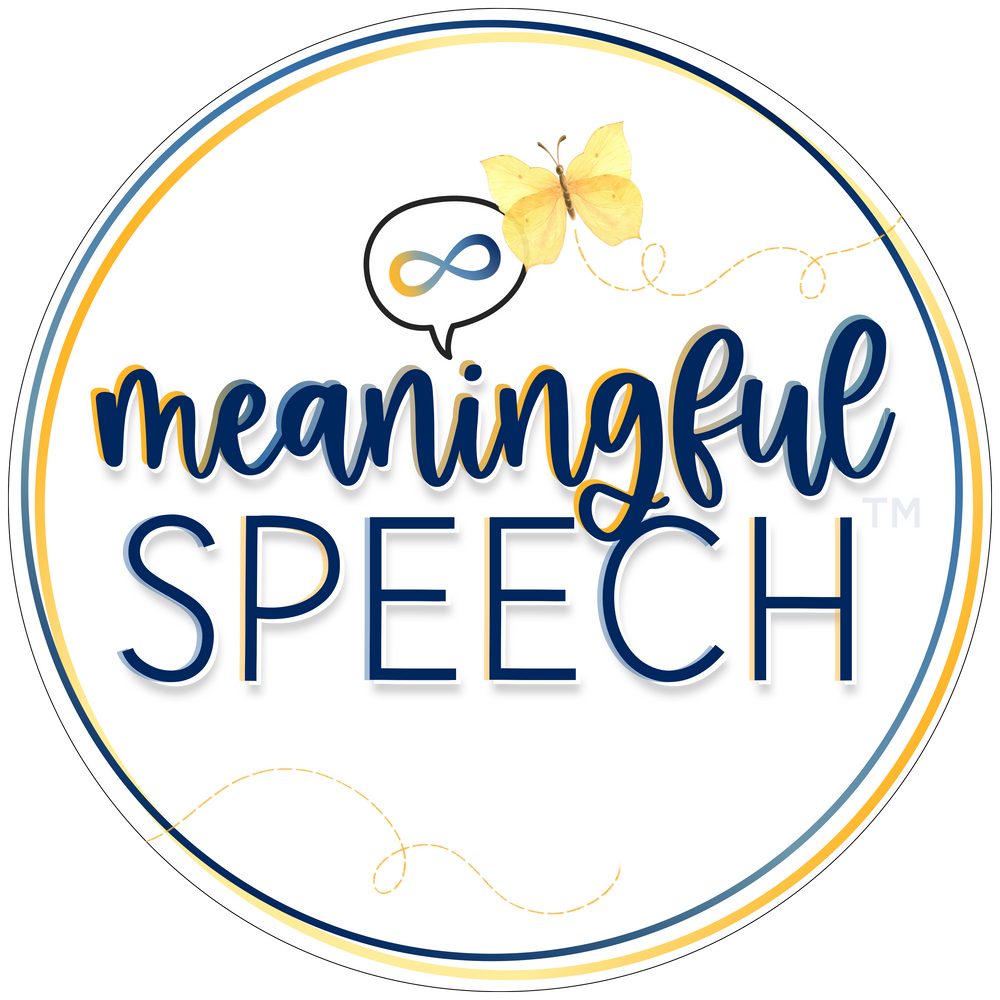IEP Goals for Gestalt Language Processors
Aug 16, 2023
The school year is here for many and right around the corner for some! As a parent you might be wondering what goals should be on your child’s Individualized Education Plan (IEP) and as a clinician you might be wondering what goals to write for your students. It gets easier to understand what are appropriate goals to support gestalt language processors as you dive deeper into understanding gestalt language development and the Natural Language Acquisition framework. We’ve put together some information on what to look for, and what to avoid for your child/student when reviewing or writing IEPs this school year.
Our long-term goal for gestalt language processors
Our overall goal for gestalt language processors (GLPs) is to support them in moving towards self-generated language. It’s important to remember that gestalt language development is normal language development. Gestalt language processors are not disordered analytic language processors. Not all gestalt language processors will need our support in moving towards self-generated language, many get there on their own. Others will need support. These are the gestalt language processors that are continuing to use delayed echolalia to mainly communicate past the toddler years. The important thing to remember is that gestalt language processors will always be gestalt language processors. Most will continue to use delayed echolalia at times for various reasons (dysregulation, vocal stimming/play, fatigue, etc.). Just because a child uses delayed echolalia at times does not mean that is the main stage they’re mainly communicating in. We can figure out which stage they’re mainly communicating in through language samples and scoring using the Natural Language Acquisition framework (Blanc,2012). You can find more in-depth information on assessment in our original course.
When creating goals for gestalt language processors we want to look at their language development and the stages that include and move away from rushing goals/objectives that are too advanced for the stage in which they’re in. The most common goals we see for early stage (Stages 1 & 2) gestalt language processors that should be avoided include wh-question goals, grammar goals, conversational turn-taking goals, labeling and expansion goals. Again, we want to keep in mind that they are not disordered analytic language processors so we are not looking at analytic language milestones to drive our goals.
What should goals look like for the different stages of gestalt language development?
- In Stage 1, our goal is for the child to increase the amount and variety of mitigable (easy to mix and match or trim down in Stage 2) gestalts they’re using to spontaneously communicate.
- Note: There is no pre-stage 1. This means that there are no prerequisite skills children need such as imitation, joint attention, gestures and general vocalizations before we can target Stage 1 goals. However, these goals might include the use of multimodal communication (e.g., spoken language, AAC, etc.). Learn more about this here.
- In Stage 2, our goal is for the child to mitigate (mix and match) partial gestalts or trim down longer gestalts.
- In Stage 3, our goal is for the child to isolate single words and begin to combine these single words into two-word combinations (noun + noun or noun + adjective).
- In Stages 4-6, we’re modeling grammar targets for the child (we’re not concerned about grammar at all in the earlier stages). We base these goals on the Developmental Sentence Types and Developmental Sentence Scoring which was created by Laura Lee. In stages 4-6 when a child is self-generating language we can also start to focus on “other” language goals like those Wh- questions (asking and answering), problem solving, narratives and higher level thinking skills.
If you’re looking for more in-depth information on assessment (language sampling and scoring), and/or goal writing you can find this in our course. The course includes example assessments, reports and goals. As you understand more about gestalt language development, creating or locating appropriate goals for your student/child will come easier.
Want to learn more in-depth information about how to support gestalt language processors?
- There are many free podcasts, webinars and articles to get you started. A comprehensive list of resources can also be found on our website and Communication Development Center's website.
- Consider taking the Meaningful Speech course to learn more about how your child or client processes language, how you can help support them from echolalia to self-generated (original flexible) language, child-led therapy, and neurodiversity-affirming practices.
- Consider taking our AAC + Gestalt Language Processing course . It will teach you how to identify, evaluate and support gestalt language processors who use AAC or who you think might benefit from AAC.
- Look for a speech-language pathologist (SLP) who "gets it" and can help you in supporting your child's language development. Check out our registry. for SLPs who understand gestalt language processing and child-led therapy.
- Are you a school-based or private practice clinician looking for intake forms for new clients/students or creative visual reminder posters for your space? Check out the Meaningful Speech Marketplace.
